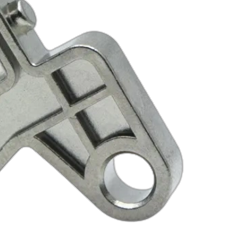QualityUncompromising Quality in Hydraulic Components
When it comes to producing hydraulic components that adhere to the highest industry standards, our meticulous quality assurance process guarantees that every component we manufacture adheres to them. Here’s how we maintain the quality that has become synonymous with our name in the hydraulic industry:
Our components are crafted with precision tolerances that are critical for hydraulic systems. We utilize advanced metrology equipment to ensure every component’s dimensions are held to the tightest specifications.
We maintain strict material traceability records, allowing us to verify the quality and origin of every material used in our hydraulic components. This ensures that the materials meet the required standards for strength and durability.
Hydraulic components often rely on tight seals. We pay meticulous attention to surface finish, employing advanced machining techniques to achieve the smoothest surfaces, which minimizes friction and ensures proper sealing.
Hydraulic components can be exposed to harsh environments. We employ corrosion-resistant coatings and materials to enhance the longevity of our components, even in corrosive conditions.














